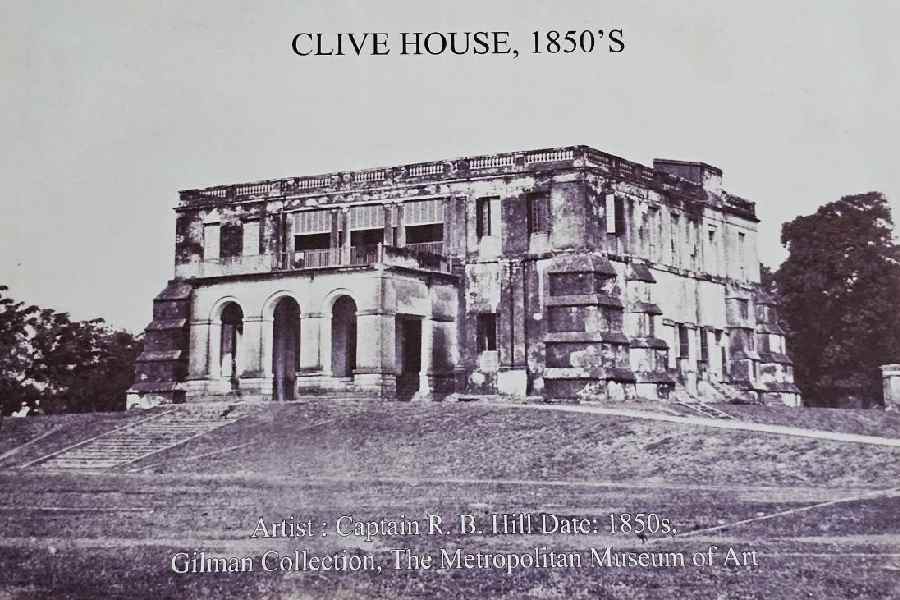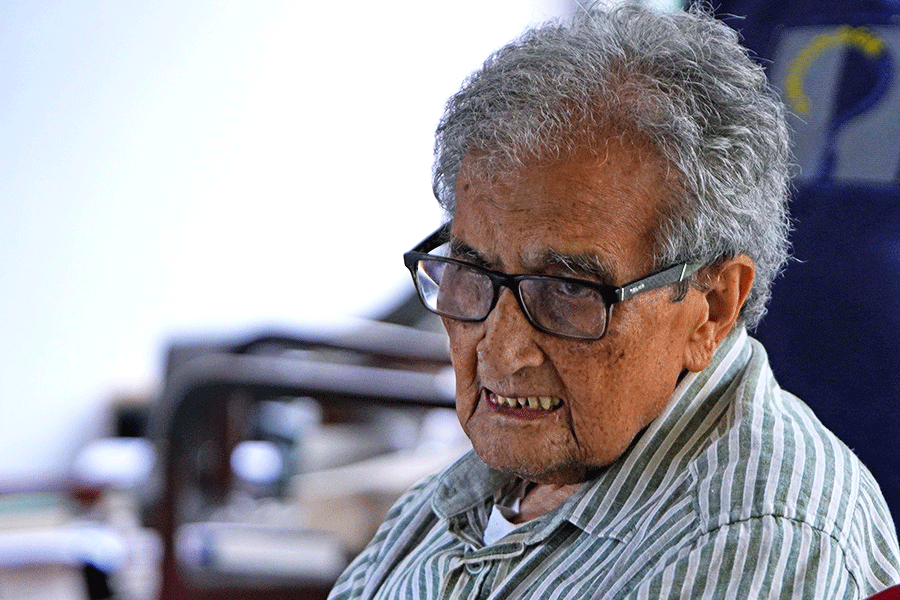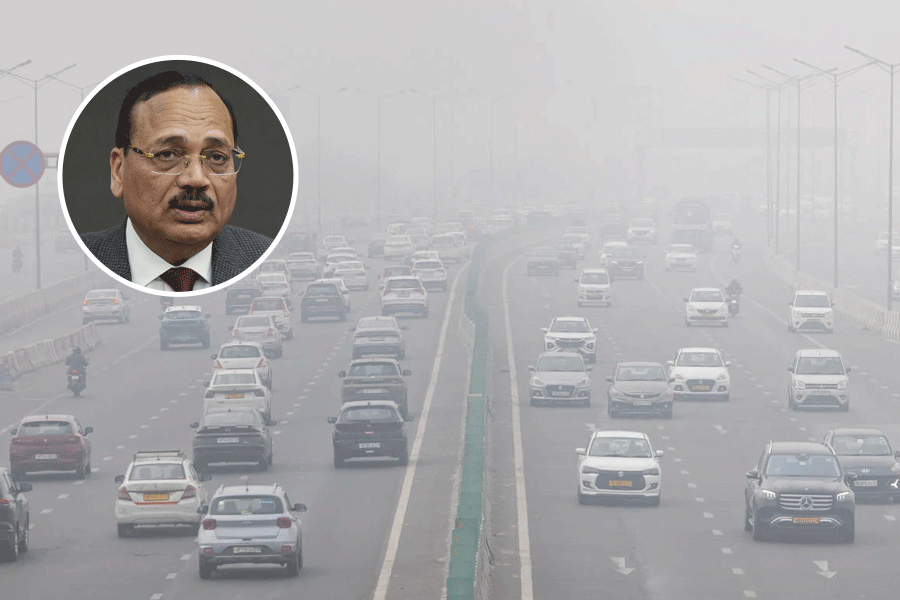Less than 10 km away from Salt Lake stadium, in Dum Dum, stands Calcutta’s oldest structure. It is called Clive House, by virtue of having been the country house of Robert Clive, the first British Governor of the Bengal Presidency and the victor of the Battle of Plassey in 1857, a result that established the rule of the East India Company in Bengal, and planted the seed of British colonisation of the Indian subcontinent.
Clive had stayed in this house atop a mound in both his stints in India — 1757 – 1760, with his wife Margaret, and 1765 – 1767, without her.
Before Clive
But archaeological investigation has confirmed that the structure is older and is likely to have been acquired by Clive either shortly before the battle of Plassey as an operational base, or during the negotiations after his victory over Nawab Siraj ud Daulah. A board at the site put up by the Archaeological Society of India (ASI) states that “After the Battle of Plassey (June 1757) Clive reconstructed this adding its upper storey in colonial style of architecture and used as his garden house… (sic)”. It also states that the building predates Clive, and “perhaps served the purpose of a Dutch or Portuguese warehouse” earlier.
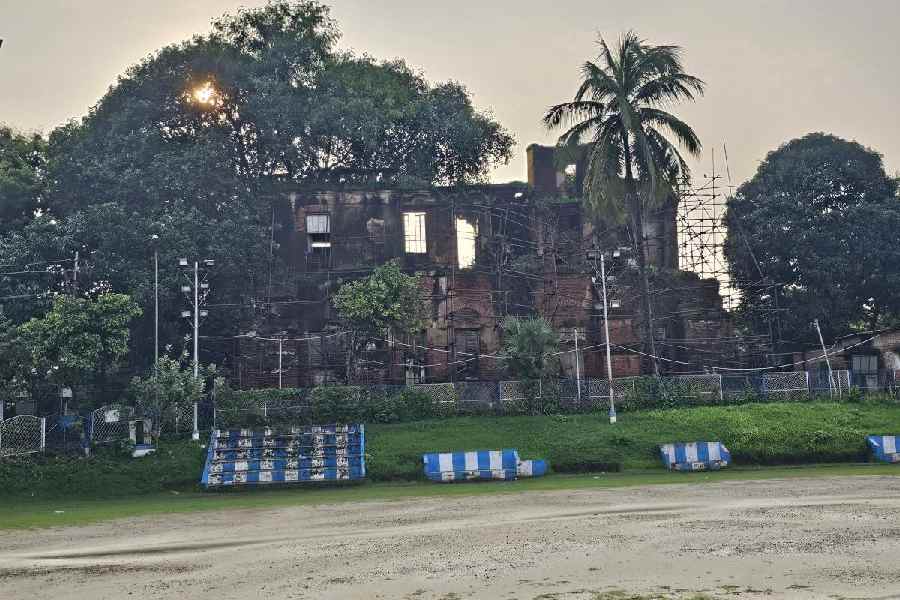
The eastern wall of Clive House seen against the sunset. Sudeshna Banerjee
There is more to the site than the house. The area has seen two rounds of excavations by the ASI, which took over Clive House after a shard of pottery taken from the ground caught the eye of an ASI official in 2001. The first round was carried out in a playground in front of the mound in phases in 2001-04, yielding articles belonging to the Sunga-Kushana period dating back to the second century BC, pointing to thriving urban centres that existed on the peripheries long before Calcutta came up.
The structure was declared as a monument of national importance according to a notification on March 25, 2004.
According to a report on Clive House in The Telegraph on January 24, 2004, “Even about 10 years ago, it was in fairly good shape and the roof was intact, though spongy. Some monsoons later, its only roof was the open sky. The core of the building was piled high with debris that hang loose and the beautiful columns looked wobbly.”
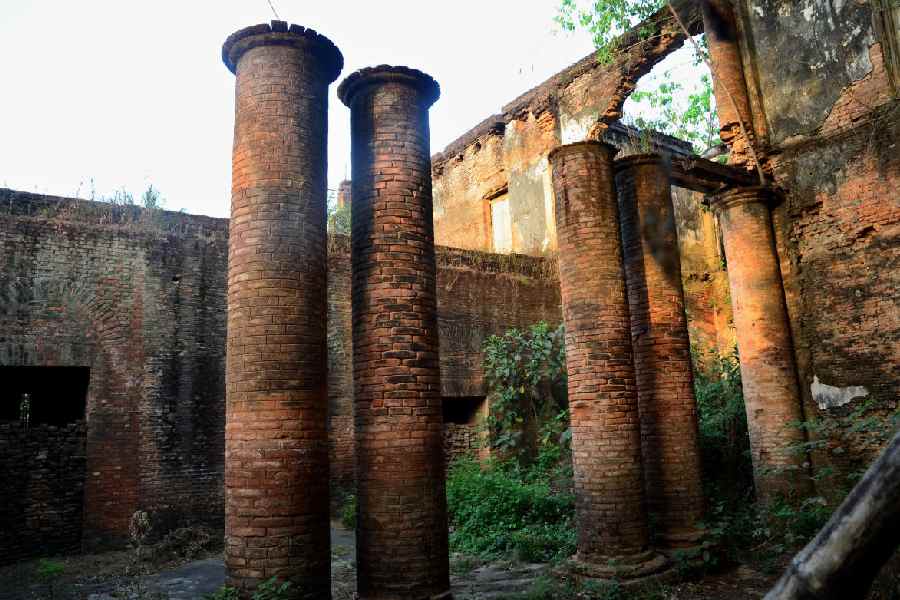
Inside Clive House in 2018. The entrance is barricaded now
A second round of excavation in another part of the playground in 2022 has yielded remains of even earlier ages than was found in the first round, with proof of earliest occupation dating back to circa 900 BCE, which has immense significance for the history of the city. “The sea was a lot closer earlier and Dum Dum appears to have been a transit point en route to the port near Chandraketugarh (another excavated site), near Berachampa in North 24-Parganas, about 34km from the Clive House site on the banks of the Bidyadhari. That is why the Dutch and the Portuguese needed a warehouse here for loading and unloading of goods coming from or going to middle or upper Ganga regions,” said Shubha Majumdar, superintending archaelogist of the ASI’s Vadodara Circle, who was earlier posted in Calcutta and had undertaken the excavation at Clive House in 2022. Majumdar was in town to deliver a lecture on the findings of the excavation on Monday at Sarojini Naidu College for Women on Jessore Road, a stone’s throw away from Clive House.
Yet, the building and its environs, despite the spot’s obvious historic importance, are trapped in a limbo of decay and neglect. The renovation of the structure, started by the ASI in 2005-06, was stalled, with no sign of resumption for about two decades since then. Plans for an ASI museum at the site to display the finds from the excavation site too are scuttled.
Encroachers in the way
The hurdle in the way continues to be a cluster of encroachments, numbering about 12-13 hutments with brick walls and asbestos roof, which occupy the periphery of the Clive House.
These families, possibly refugees from across the border, were double in number earlier and used to stay inside the structure when the ASI had tried undertaking the renovation. “Work is hampered by the existence of the families. The government as well as the municipality have issued vacation notices but the occupants claim rehabilitation,” Bimal Bandopadhyay, the then-superintending archaeologist, ASI, Calcutta Circle, was quoted as saying in the 2004 report. The ASI had made an effort to “restore” the unoccupied portion, removing deep-rooted trees and clearing piles of debris on the southern side. A pillared verandah, in a precarious state, was consolidated and some stairways were restored.

The northern restored side of Clive House. Pictures by Sudeshna Banerjee
“The site has been protected but proper conservation can only happen if the encroachment is cleared. We cannot carry out scaffolding and bring in materials and machine unless we are allowed a clear, habitation-free path,” Majumdar told The Telegraph Salt Lake on the sidelines of the seminar.
What we saw
When The Telegraph Salt Lake visited the site on Monday, an outdoor unit of a split air-conditioner had been nailed to a west wall of Clive House. Under the AC unit, a water pipeline had been clamped to the wall leading to a tap, under which utensils were being washed. A slip of a room, a part of the historic structure, even had a cooking gas oven and a gas cylinder along with utensils inside. A row of tenements stood at the back of a Kali temple, which looked to be a recent structure. Inside a tenement, The Telegraph Salt Lake spotted a refrigerator on top of which a TV set was airing a cable channel show.
Facing the restored northern side of the building was a locked ASI camp office. Right behind it, an expansive hall looks out to the playground where the excavations had taken place. The hall was a part of a Hanuman and Shiva temple. “We saw it being built about five-six months ago,” said Pratyusha Banerjee, who stays in neighbouring Doctorpara, and accompanied The Telegraph Salt Lake to the site along with Marisha Saha, her classmate in the anthropology department of Sarojini Naidu College for Women. A woman, who was collecting water at a tap and introduced herself as a resident of a tenement, agreed that the bigger temple was just a months-old structure.
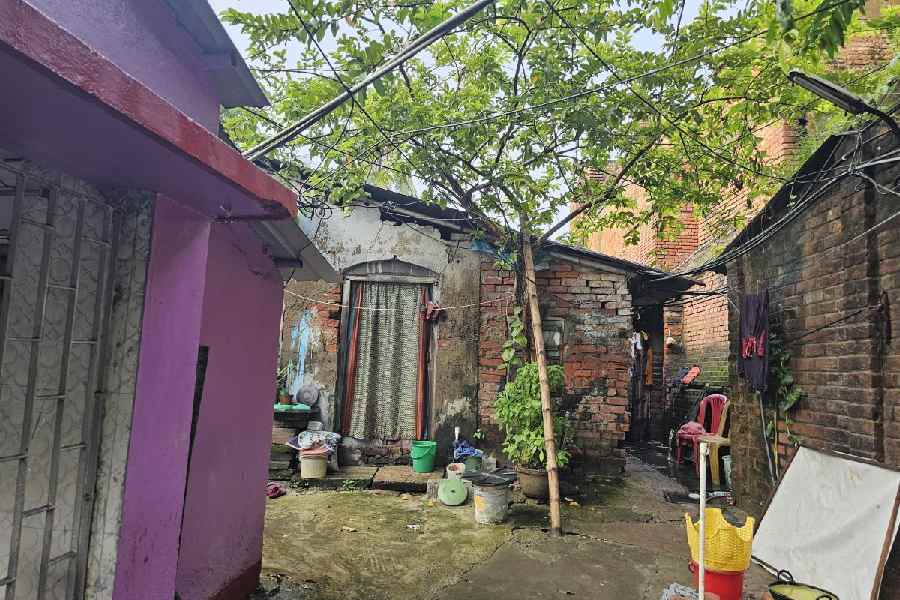
The path leading by a temple towards more illegal brick-andmortar huts beside the western side of Clive House
The area is under the South Dum Dum Municipality and a plaque on an adjacent wall on the mound announced the installation of high mast lamps atop and below the mound in 2021, naming higher education minister and local MLA Bratya Basu as having done the inauguration along with local councillor Avijit Mitra, confirming their visit to the encroachment-ridden historic area.
Ball in court
All hopes are now pinned on the outcome of a public interest litigation, seeking the restoration of Clive House, filed in the high court. In an order dated June 26, the division bench of justices Soumen Sen and Smita Das De directed the ASI to submit a report within six weeks. The case has not come up again for hearing since then.
While the current superintending archaeologist Rajendra Yadav could not be contacted, being abroad, a junior ASI official said letters had repeatedly been sent to the district collector’s office and the South Dum Dum Municipality, seeking the Clive House area to be freed of squatters. He did not want to comment further, citing the matter to be sub-judice. When The Telegraph Salt Lake contacted the district magistrate’s office (as the district magistrate is also the district collector), an official claimed no such letter had been received.
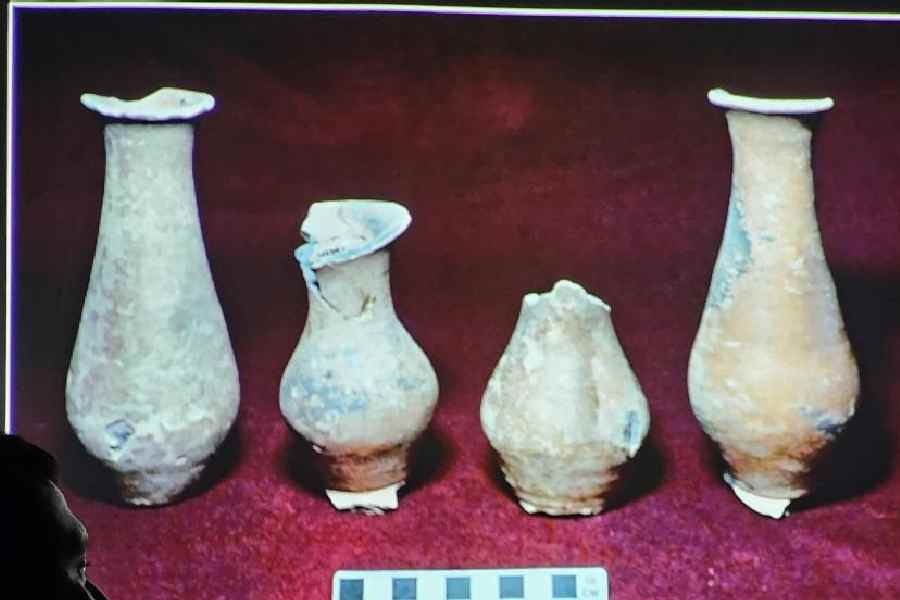
Pottery identified as Dumdum ware excavated from the field nearClive House shown at the seminar by Shubha Majumdar of ASI
“The encroachers have reduced in number, from 20-25 families two decades ago to 12-13 families after the roof crashed and they had to move out. Those who built the hutments on the mound are digging their heels in the hope of rehabilitation. But a case filed by some of them has got dismissed,” said Shyamal Ghosh of Deshkal, one of the joint organisers of the seminar, along with Greater Dum Dum Heritage Preservation Society, which has conducted research for over two decades on the area’s economic and political history.
The organisation gave a call on Monday for a public movement for the restoration of Clive House on World Tourism Day on September 27. “We plan to bring out a heritage rally from Clive House to the airport,” he said. There is a historical significance to their choice of the airport as the end point of the rally. “The current runway used to be the parade ground of the British soldiers belonging to the Dumdum Cantonment. This is where we presume the Sepoy Mutiny — which led to India’s first war of independence — to have originated before it spread to the Barrackpore Cantonment,” said Moumita Saha of Deshkal, who gave a presentation at Monday’s seminar.
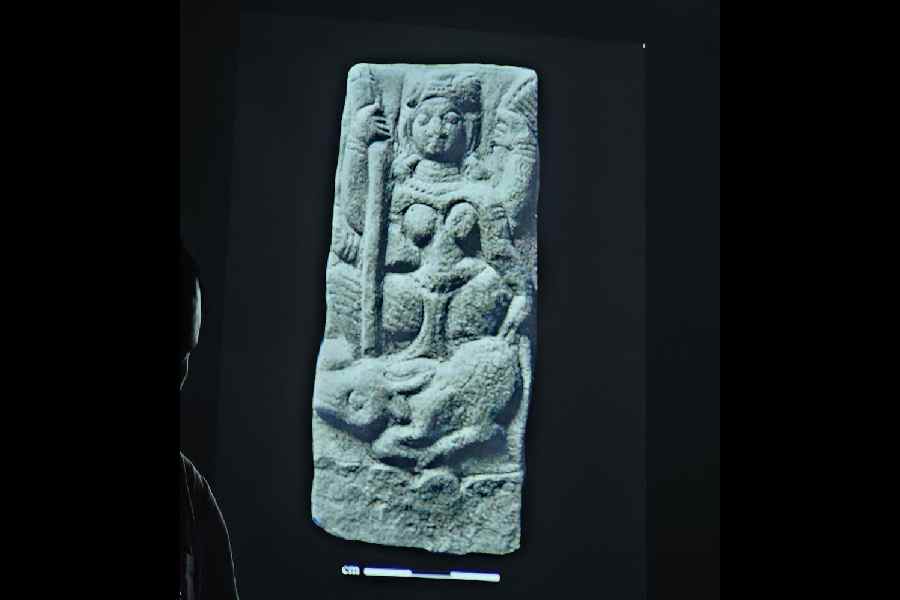
A Mahishasuramardinifigurine recovered fromthe excavation site
“Dum Dum Cantonment was the headquarter of Bengal Artillery, which was the artillery division of the Bengal Army, whose jurisdiction extended from Myanmar to Afghanistan. These Bengal Artillery soldiers were sent to most colonial wars. It comprised both Hindu and Muslim soldiers. The cartridges of their Enfield rifles were manufactured at the Ordnance Factory Dum Dum and the Gun & Shell Factory Cossipore. So it is most likely that the soldiers at the Dum Dum Cantonment would get to hear of the use of beef and pork fat in the cartridge covers faster than their colleagues at Barrackpore. It is at the parade ground, which is now the airport, where they rebelled on January 22, 1857. The mutiny spread to Behrampore on February 26 and to Barrackpore on March 29, after which Mangal Pandey was hanged and the revolt spread across the country,” the researcher said.
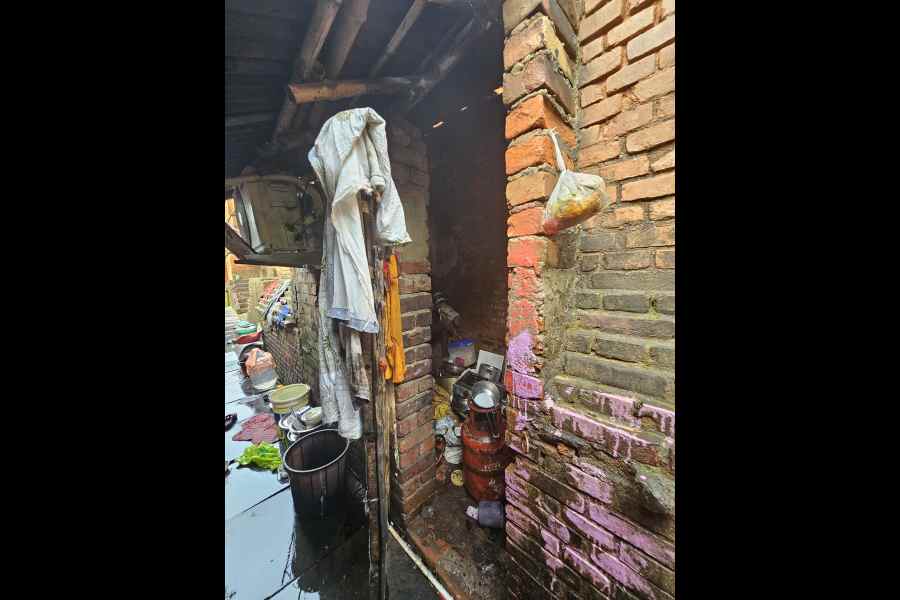
Cooking gas and oven used by squatters inside a room against the outer wall of Clive House
She mentioned another significant association with Clive House. “The Treaty of Alinagar, signed on February 9, 1757, between Siraj-ud-Daulah and Clive, was in all probability signed here,” she said.
This treaty restored the British East India Company’s trading privileges and allowed them to fortify Calcutta, which had been previously captured by the Nawab. “So the terms of the treaty show the Nawab being pushed to the backfoot even before the Battle of Plassey,” Saha said.
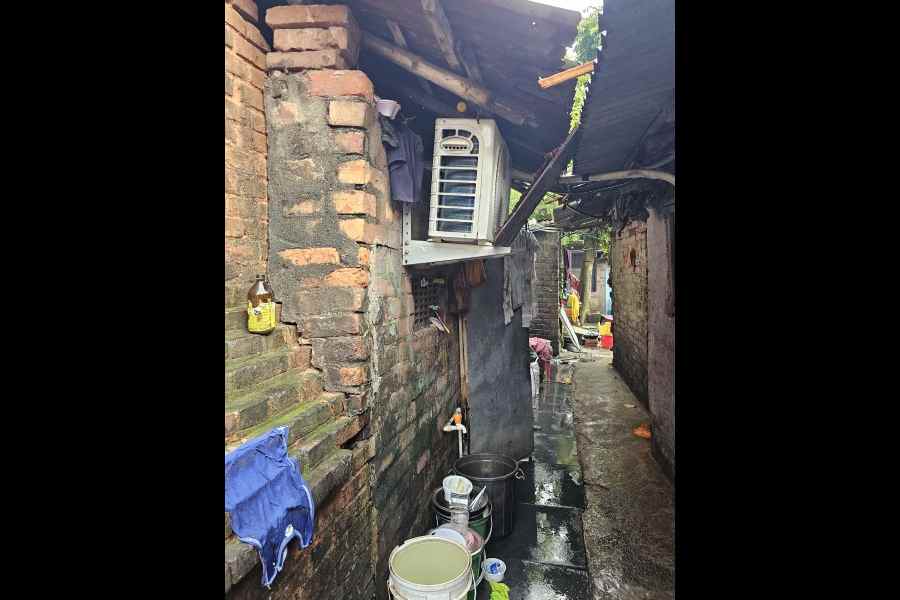
An air-conditioner’s outdoor unit and a water pipeline hammered to the Clive House wall by squatters
Clive House was the residence not just of Clive. Major-General Thomas Hardwicke, the head of the BengalArtillery, was a well-known naturalist after whom 11 species have been named. He had created a stuffed body and painting museum here. Significant work on Indian zoology was carried out here. We are forgetting these links in our neglect of Clive House.”
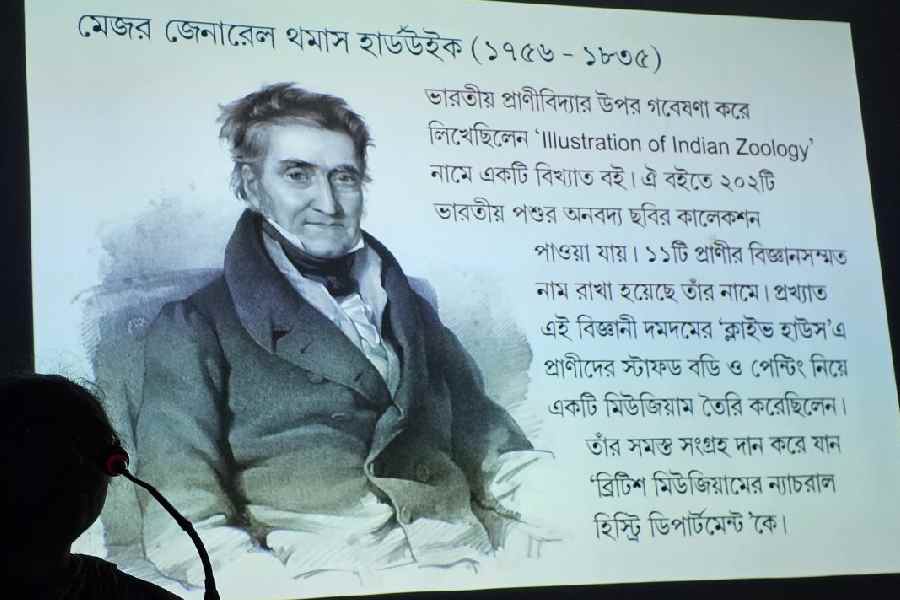
Major-General Thomas Hardwicke, co-author of Illustrations of Indian Zoology, created a stuffed body and painting museum of animals at Clive House
“We could not preserve OutramInstitute, the headquarter of BengalArtillery, or Fairy Hall, that was thesoldiers’ mess which Ananda MohanBose, one of the founders of IndianNational Congress, purchased later.Only this structure of so much historic importance is left in Dum Dum.Shall we not try to retain an edifice sorich in history?” she appealed.

